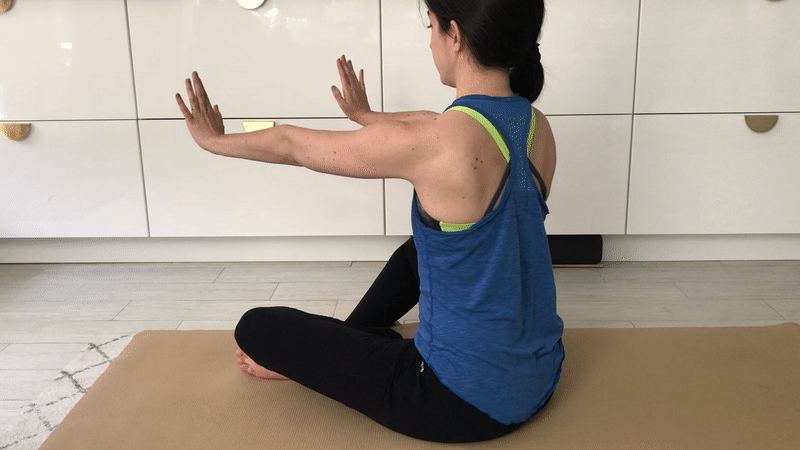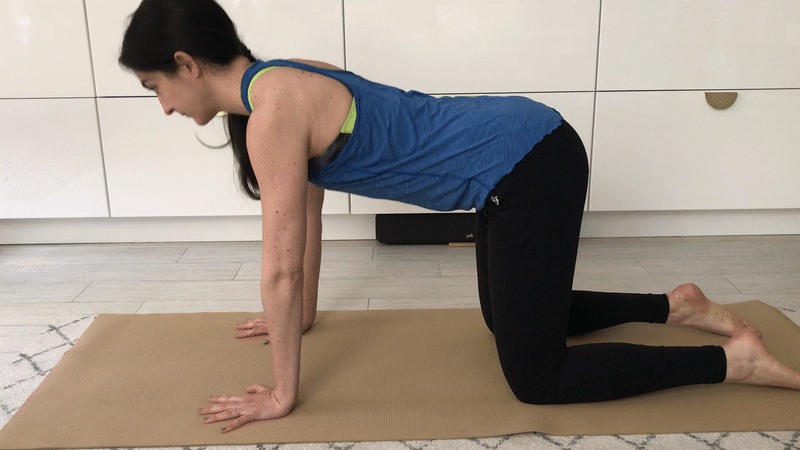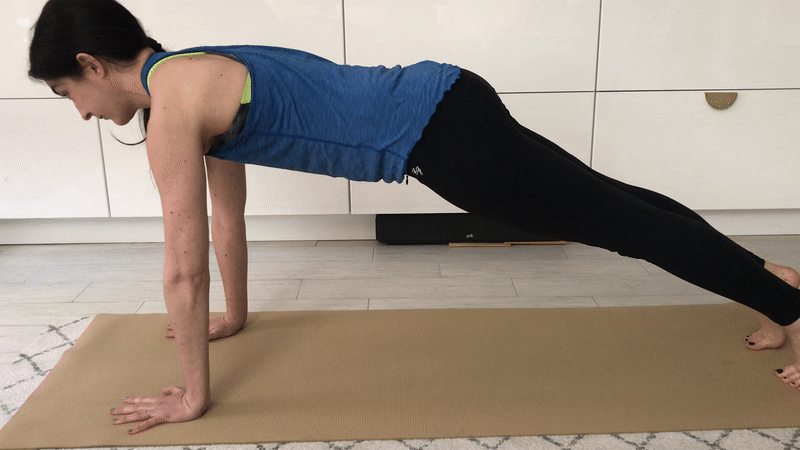A feel-great exercise to support your posture and breathing, no equipment required
Plus, a few ways to level it up
There’s a muscle in your torso I’d guess you haven’t thought about lately (if ever), and it could probably use some attention: your serratus anterior. The serratus muscles connect your ribcage to each shoulder blade, which means that neglecting them can cause “winging,” or the shoulder blades flaring out. When the serratus muscles are strong, the shoulder blades effortlessly plug back and down into place, which in turn broadens the chest, allows you to sit or stand up taller and with comfortable posture, and helps prevent injury to the rotator cuff. The serratus is even a supporting actor in the cast of characters known as your core, because of its connection to the ribcage and thus, your breath. Strong and functional serratus muscles can actually make it easier to breathe deeply!
To help your serratus achieve greatness, try a serratus push-up (also known as a scapular push-up). The motion here is a bit subtle, so I’d suggest practicing it seated to make sure you understand what you’re supposed to do before you get on all fours or into a plank and throw gravity into the mix. Unlike a regular push-up, you won’t be bending your elbows — all the movement comes from the shoulder joint.
Serratus push-ups: seated practice
Note on this image: I’m actually a little more in my traps than would be ideal! Try to avoid shrugging your shoulders toward your ears when you bring the shoulder blades toward each other.
Find a comfortable seated position, in a chair (scoot to the edge, if possible, to ensure your spine is in a neutral position and not slouched) or on the floor.
Raise your arms to shoulder-height in front of you, palms facing forward.
Keeping your arms straight, use your shoulders to push your palms forward, bringing the fronts of your shoulders toward each other and pulling the shoulder blades away from each other. Your upper back should feel slightly “domed.”
Then, continuing to keep the arms straight, pull your shoulder blades toward each other (the backs of your hands will move toward your face). Exaggerate the shape, visualizing your chest moving toward your hands.
Perform a few reps, taking care not to shrug the shoulders too much (as I unintentionally did in the gif above! Oops.). You want to feel the “work” mostly coming from underneath the shoulder blades, not the trapezius muscles on the tops of your shoulders.
Once you’re comfortable with the movement, you can try performing it standing with your hands on a wall, or move along to all-fours or plank (see below).
Serratus push-ups: all-fours/quadruped position
Come to all fours, wrists directly under shoulders and knees directly under hips.
Keeping your arms straight, pull your shoulder blades toward each other, allowing your chest to drop slightly and your face to move toward the floor.
Continuing to keep your arms straight, push the ground away, bringing the fronts of your shoulders toward each other and the shoulder blades away from each other. Your head will move toward the ceiling and your upper back should feel slightly “domed.”
Perform a few reps, remembering to keep your shoulders away from the ears. You want to feel the “work” mostly coming from underneath the shoulder blades, not the trapezius muscles on the tops of your shoulders.
If you’d like a challenge, you can move along to a serratus push-up in plank position (see below).
Serratus push-up: plank position
A note on this one: Please do not try this if you aren’t fully comfortable with the movement. I’d suggest a few days of quadruped push-ups (see above) first, and maybe even some knee-plank push-ups, to ensure you’re doing it correctly and aren’t noticing any pain or discomfort (soreness is fine!) — plank position adds significantly more weight to the move, so the risk for injury is higher. If you aren’t sure, skip it — ask a trainer or physical therapist for help.
Come to a plank position, wrists directly under shoulders and legs extended behind you. Engage your abdominals; don’t allow your hips to dip down or pike up.
Keeping your arms straight, pull your shoulder blades toward each other, allowing your chest to drop slightly and your face to move toward the floor.
Continuing to keep your arms straight, push the ground away, bringing the fronts of your shoulders toward each other and the shoulder blades away from each other. Your head will move toward the ceiling and your upper back should feel slightly “domed.”
Perform a few reps, remembering to keep your shoulders away from your ears. Again, you want to feel the “work” mostly coming from underneath the shoulder blades, not the trapezius muscles on the tops of your shoulders.
How did that feel? Consider adding this to your warmup before shoulder exercises. I’ll use it in a WOW soon, too!
Note: A version of this post, and the accompanying images, originally appeared on Medium when I was writing for Better Humans.
xo
Anna







